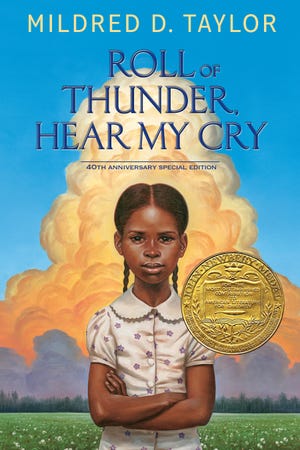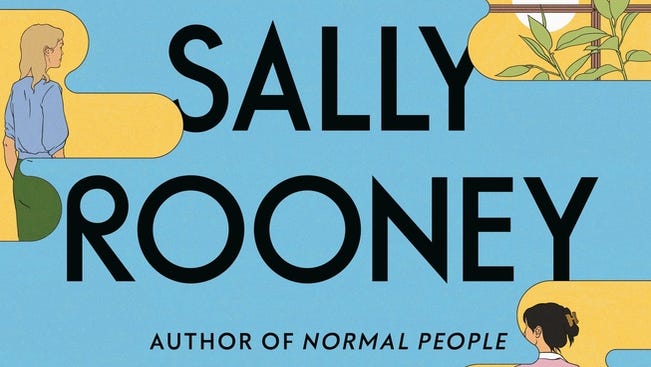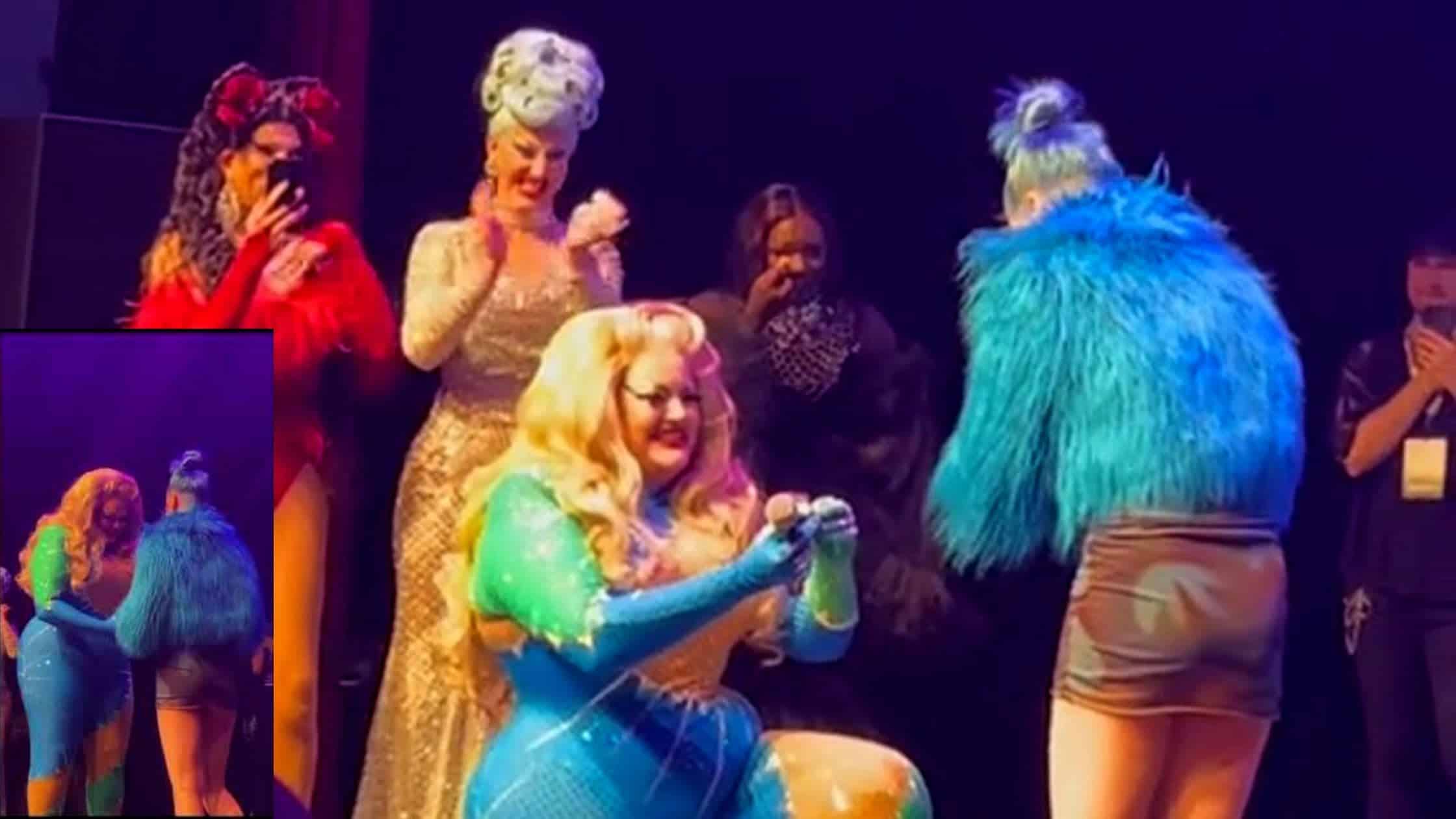As journalists, it’s our job to seek out truth even when it’s uncomfortable. We value diverse perspectives, are open to new ideas and respect intellectual freedom.
So it should come as no surprise that the thought of banning a book would make us riled.
That’s why for this year’s Banned Books Week, USA TODAY staffers are defending some of the most-challenged books in America as compiled by the American Library Association’s Office of Intellectual Freedom.
Why are these titles challenged or banned? For a variety of reasons, including offensive language, being sexually explicit, having violence, promoting LGBTQ+ perspectives and expressing alternative views.
What happens when a book is challenged in school boards and public libraries? Titles can be removed from school curriculum or library shelves. Most public schools and libraries have boards comprised of elected officials or members appointed by elected officials. It is by the power of these officials, that a book can go from challenged to banned in a particular school district or public library. Even if it happens only once, it is one time too many.
Sure, there is the argument that we can bypass places such as public libraries and purchase a book. But that is only true for those with the financial resources to do that. For many, particularly children and young adults, school and public libraries are their only means to access literature.
With that in mind, USA TODAY staff looked at challenged and banned books and chose those that are meaningful to them. In the books’ defense, we’ve written why they deserve a place in our schools, libraries and society.
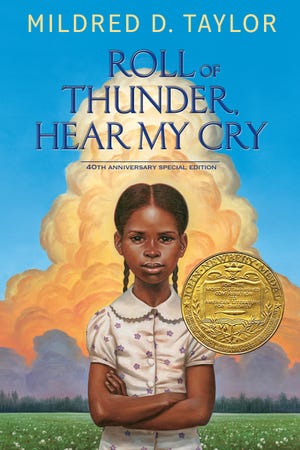
‘Roll of Thunder, Hear My Cry’ by Mildred D. Taylor
American public school reading curriculum is heavily white. I can attest to that with my own experience: In my 12 years as a student in American public schools, I was only assigned one novel by an African American writer, and that was Taylor’s Newbery Medal-winning story of the Logan family, sharecroppers in rural Mississippi whose love for each other helps them survive the cruelties of the Jim Crow South. I grew up a pretty privileged white kid with no personal experience of racism, and I can keenly recall how hot I burned with the unfairness of it reading “Roll of Thunder” for the first time in the second grade. If we want to create more anti-racists we need to assign more diverse books in schools, and “Roll of Thunder” is still a great place for young readers to start. — Barbara VanDenburgh
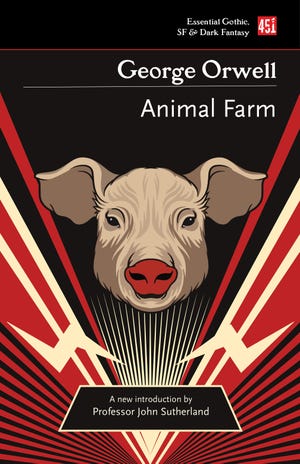
‘Animal Farm’ by George Orwell
I first read it in middle school in Phoenix, only a few years after my family had escaped communist Vietnam in 1975. I checked it out of my school library because of the title and was ready for enchanted spiders and pigs like in “Charlotte’s Web” by E.B. White. Instead, in Orwell’s attack on the Soviet Union, I recognized all too well what my family was hearing from relatives who hadn’t been able to flee the fall of Saigon. Daily indoctrination classes, South Vietnamese officers sent to reeducation camps and their homes confiscated and given to communist officers. Those who could still afford radios risked imprisonment to listen to Voice of America because you couldn’t believe the state-run media. Orwell wrote “Animal Farm” because he wanted to tell the story of the Russian Revolution in a way anyone could understand. And children everywhere need to. — Thuan Le Elston
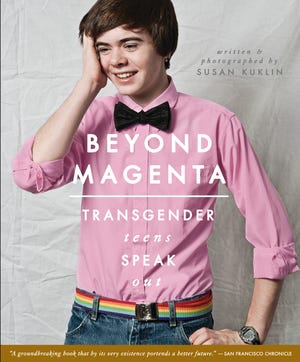
‘Beyond Magenta: Transgender Teens Speak Out’ by Susan Kuklin
A 2019 study revealed that approximately 3% of American teens (ages 13 to 17) identify as transgender or gender noncomforming. In this book, Kuklin interviews six trans teens about their childhoods, their coming-out experiences and where they are today. It brings hope to trans teens that there is a future for them, and also provides a clear look into their minds for loved ones to truly understand their points of view. Despite this book receiving many rewards, it was in the top 10 Most Challenged Books lists for 2015 and 2019 for “its effect on any young people who would read it.” To the contrary, this book provides a unique perspective on gender and sexuality to help teens learn about themselves from other people their age. I believe this book does a great service to the young LGBTQ+ community. — Melissa Rorech
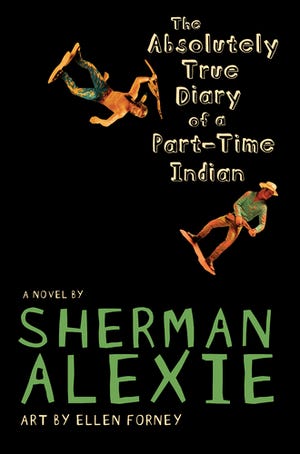
‘The Absolutely True Diary of a Part-Time Indian’ by Sherman Alexie
I first read the story of Junior as he leaves his school on the Spokane Indian Reservation for an all-white school during Banned Books Week in middle school. As Junior struggles to find his place in a school where the only other Indian is the mascot, he grapples with generational poverty and discrimination. While I cannot fully understand Junior’s experience, I, as a person of color at an extremely white school, saw myself in his battle to explore identity in an environment that seeks to erase it. While the classroom offered a whitewashed, sanitized reality of Native Americans’ experiences, this book offered me a glimpse into the systemic oppression Native communities have faced since colonization. It shows tribes as part of the current fabric of our nation rather than merely part of history. And it examines a dimension of diversity that’s often forgotten – disability. In the hands of a trusted teacher who can guide students through difficult conversations, this story has the power to push readers into uncomfortable but important spaces and allow students whose experiences are often ignored in classrooms to be seen – all through the lens of an uproariously funny teen. — Christine Fernando
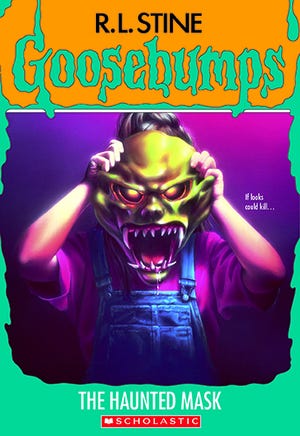
‘Goosebumps’ (series) by R.L. Stine
It’s fun to be scared. Granted, in controlled environments – movie theaters, haunted houses or between the covers of a book, for instance. Or in the case of Stine’s beloved horror series, dozens of books starring a bevy of spooky frights: werewolves, ghosts, haunted Halloween masks and even an evil ventriloquist’s dummy. These books have long been challenged in school libraries for being too scary, but those who object clearly don’t remember what it was like to be a kid with a vivid imagination. In a world so full of real horrors, the pretend ones offer escape and catharsis. Besides, if my generation could survive the “Scary Stories to Tell in the Dark” illustrations, what possible danger could a few “Goosebumps” books be? —VanDenburgh
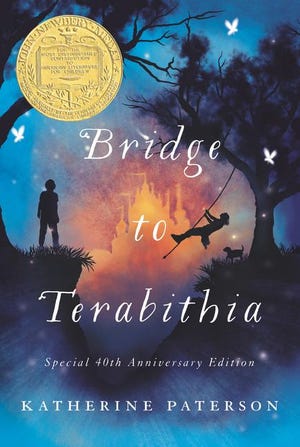
‘Bridge to Terabithia’ by Katherine Paterson
Farm boy Jess Aarons and imaginative, bright-eyed new girl Leslie Burke become friends and create Terabithia, a fantasy kingdom in the woods. Inspired by the magic they brought to that wooded glade, I once made my own Terabithia in a circle of tall trees in my backyard while playing outside with my friends. But (spoiler alert) after Leslie fell to her death when the rope they used to swing to Terabithia snapped, I was shocked. I didn’t know then that Leslie’s death and Jess’ experience of it would feel much like how my own loss would feel in the many years to come – random and senseless. Seeing Jess in the aftermath of Leslie’s death prepared many of us for what loss would feel like, the unsparing pendulum swinging between the good days and the bad. Their story also taught me the power of joyful imagination and creativity, that people are complicated (even the bullies) and that, despite the devastating reality of death, there is hope for life after loss. — Fernando

‘Brave New World’ by Aldous Huxley
Few classic sci-fi novels bear a more direct resemblance to modern times than “Brave New World.” Huxley explores a future in which the government’s obsessive need for economic growth creates an endless consumerist cycle and a society divided into a rigid caste system that separates people by jobs, intelligence and appearance. The world is painted as a utopia, but only because its citizens are kept complacent by entertainment and mood-altering drugs. They believe they receive everything they want, but their places in society have been carefully curated by the government (and cloning technology). There’s no room to be an individual in Huxley’s futuristic England, and anyone who tries is punished. Consumerism. Prejudice. Happiness above truth. These are all things we continue to grapple with as a modern, global society. It’s as if Huxley traveled through time to 2021 before writing his novel. — Joanna Nelius
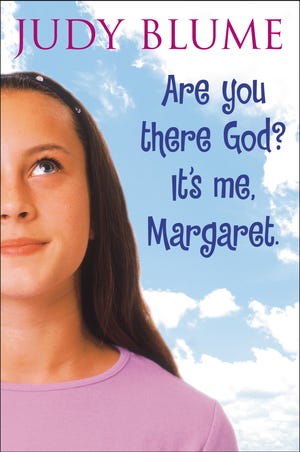
‘Are You There God? It’s Me, Margaret.’ by Judy Blume
“Why would anyone want to ban ‘Are You There God’?” my sixth-grade daughter asked. “It’s my favorite book.” Grace is 11, the same age I was when I read Blume’s classic novel — only it was too new to be called a “classic” back then — about preteen girls grappling with puberty (breasts and periods, anyone?), religion and sexuality. As with Grace today, it was my favorite book then. I found comfort and familiarity in Margaret, her friends and her conversations with God. Their world was my world, and Blume paints an unvarnished picture of what life is like for maturing girls. Those frank discussions of sensitive topics – often challenging for tweens and adults alike – are why girls love the book and adults challenge it. And why this mom is thrilled that it’s still one sixth-graders reach for, and cherish, a generation later. — Kristen DelGuzzi
‘The Catcher in the Rye’ by J.D. Salinger
Twenty years ago, a school board member in small-town South Carolina checked out Salinger’s work from the high school libraries in his district. He planned to pay for the copies instead of returning them, he told the local paper. He didn’t want students to read the “filthy, filthy” book and said the protagonist, Holden Caulfield, was a poor role model. He’d already tried once to ban it. His second attempt failed as well – though it wasn’t part of any curriculum. When I agreed to write about “The Catcher in the Rye” as part of this year’s Banned Book Week, I had no idea that the most infamous protest against it happened at my high school. Or that it played out when I was a sophomore, only a few years younger than the fictional Caulfield, in the throws of the kind of angst and ennui that defined Salinger’s prose. I didn’t read it until my mid-20s. Afterward, I realized I’d missed the moment. My rebellious years were behind me and I’d forgotten how isolating they could be. How much I could have used a book like that at the time. Finally learning why it’d been kept from me has reignited some of that disquiet. It’s not lost on me that old men who think they know best and stand in the way of students reading great literature are exactly the sort of people Caulfield railed against. So let me now be the proverbial catcher for the next generation: Kids, read it all. Especially the ones the man tells you not to. — Cara Kelly
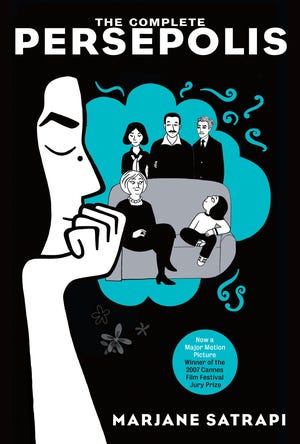
‘Persepolis’ by Marjane Satrapi
When I first read “Persepolis” in college, I was immediately enchanted with the punk-rock protagonist of the graphic memoir. I never lived through the Islamic Revolution in Iran but to see Satrapi depict how the revolution disrupted individuals, families and communities has always stuck with me. I’m very much a supporter of women and girls who like to talk back, as Beyonce once sung, and who challenge the status quo. I’m not sure how anyone can read “Persepolis” and not be touched by how loving Satrapi’s family is even when they are fearful for her safety. Satrapi showed us what life was like as a young, rebellious woman growing up in Iran during the 1980s. For those who found a way to survive they lived life as best they could. And like so many other young women coming-of-age Satrapi had sex (gasp!) and cursed and used drugs. Experimenting is what young people do. It’s an insult to her vulnerability that some have tried to ban her book. — Mabinty Quarshie
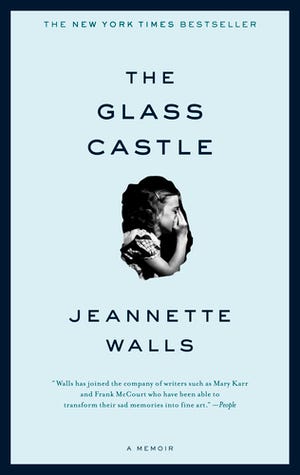
‘The Glass Castle’ by Jeannette Walls
I first read “The Glass Castle” on assignment as a rookie reporter in my college town. The memoir had been selected by the university and county library as a summer book. It was an appropriate choice for two institutions little more than 100 miles from Welch, West Virginia, the closest thing the author has to a hometown. Many of the issues Walls faced as a kid are endemic to the area: poverty, substance abuse, violence. She tackled them head-on — so much so that her detailed descriptions have been used as fodder to ban the book from school curriculums. That short-sightedness misses how masterfully Walls infuses the truth about her problematic childhood with a sense of pride and perseverance. As a reporter in the Appalachian mountains, I knew kids there and across America were suffering the same social ills (and still do, made worse by the opioid epidemic, COVID-19 and financial downturns). Walls’ writing tells them they shouldn’t be ashamed of their circumstances and the decisions of adults around them, and that they don’t have to carry the stigma of poverty or abuse. I can think of few more meaningful messages. Save, maybe, the one she inscribed in my copy: “Just tell the truth!” — Kelly
‘The Curious Incident of the Dog in the Night-Time’ by Mark Haddon
This was among the first books I read with a neurodiverse character at its core. Instead of letting Christopher sit on the periphery, Haddon brings the reader into Christopher’s perception of the world by writing the text in ways that make it more representative of his lived experience. The novel directly shows how Christopher perceives things, including how signs at a busy airport become overwhelming walls of text. This allows Haddon to bring into question whether what most people think of as “normal” is actually better. Christopher’s world is more compassionate and empathetic towards animals, including his pet rat, Toby, and the dog whose mysterious death he sets out to solve. Aside from being a phenomenal bildungsroman, the novel stands the test of time. I read it first as a teenager, and again in my senior year of college. Both times I walked away feeling as though I’d learned more than you’d think a fictional book could ever teach. — Lindsey Vickers
‘The Things They Carried’ by Tim O’Brien
The Vietnam War may have started more than 60 years ago, but that doesn’t make the war stories of “The Things They Carried” any less relevant for young readers today. It’s not an easy read — but that’s the point. Learning about the day-to-day struggles soldiers have to endure is not supposed to be easy. It’s supposed to be uncomfortable. It’s supposed to be vulgar, explicit, and confusing because that’s exactly what soldiers face. The novel provides an unfiltered view of war that vastly contrasted the way people felt about World War II. It represents a pivotal point in history and mirrors the public sentiment of the ’70s when people stopped romanticizing war and started critically examining why we go to war and how it affected those who fought. This book presents a much-needed glimpse into the real lives of soldiers, and while it may not be a feel-good read, it’s a necessary one. — Kate Ellsworth
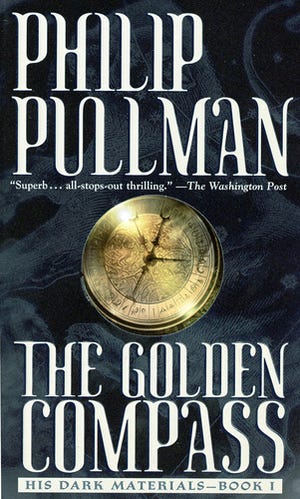
‘The Golden Compass’ by Philip Pullman
The same reason as to why “The Golden Compass” was banned is the reason it should be a must-read. The novel is often described as the antithesis of “The Chronicles of Narnia,” which is known for its Christian allegories, because of its supposed message of atheism. Pullman’s first book in “His Dark Materials” fantasy trilogy pushes the boundaries with young characters seeing through the lies of organized religion (in this case the Magisterium) and eventually killing “God” himself. Regardless of the readers’ religion, it’s important for children to learn to question any and all institutions.Through a more contemporary lens readers will surely appreciate Pullman’s themes even if they don’t agree with his conclusions. — Josh Rivera

‘Beloved’ by Toni Morrison
Motherhood in the U.S. has never been easy. We are a nation that reveres motherhood without providing theresources moms need to thrive. Just look at how many mothers suffered during the coronavirus pandemic. Now imagine the trauma of being an enslaved Black mother who doesn’t even control her own body much less her children’s. “Beloved” shows us the impossible choices Black mothers were forced to make during slavery. Who could blame Sethe, the protagonist, for doing anything to prevent her children from being enslaved — even to the point of death? I certainly can’t. Slavery has never been pretty, and it never will be. There are moments of incredible pain and violence inflicted upon Black men and women in “Beloved.” We can’t look away from these horrors because a few people refuse to accept that racism was a fundamental part of U.S. history. Holding up the nation’s sins to our faces was a heroic choice Morrison made in her writing. And we were all the better for it. — Quarshie
‘To Kill a Mockingbird’ by Harper Lee
When Biloxi, Mississippi’s school board argued “To Kill a Mockingbird” should be kept out of the classroom in 2017 because it makes people “uncomfortable,” they actually nailed the best reason to keep it on the shelves. Everything in the book is uncomfortable, and not because it accurately describes overt racism in sometimes noxious language. It’s uncomfortable because it holds up a mirror to our present: the ease with which neighbors will embrace lies and willingly fall in with a mob; a legal system working overtime to send a Black man to prison; how fear informs our uninformed view of the mentally ill; and the brutal dividing line between the poor and the privileged. This is a provocative book, not a perfect one. But the shortcomings of 1930s race, society and language it depicts which so distress critics – and made the Biloxi school board so uncomfortable – are not failings of the author’s words. They are the continued failings of our world. Now is not the time to look away. — Patricia Beall
‘The God of Small Things’ by Arundhati Roy
Winner of the Man Booker Prize, “The God of Small Things” focuses on twins and their family in Kerala, India. Roy explores how her characters’ lives — both past and present — are shaped by their social, political, religious and environmental surroundings. She provides readers with an insightful look into India’s colonial history, discriminatory caste system and the rise of the Communist Party in the nation in the late ‘60s while challenging notions of forbidden love to present a complex portrait of an era and its societal consequences years later. It’s an important read for students to understand the legacy of colonialism and the devastating impacts of discrimination. — Grace Hauck
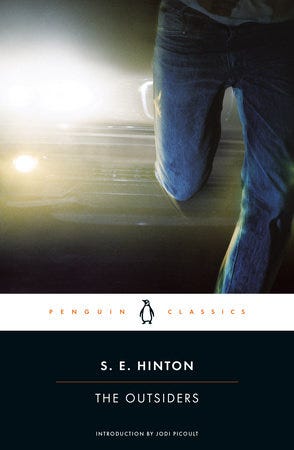
‘The Outsiders’ by S.E. Hinton
When Johnny Cade implores Ponyboy Curtis to “stay gold,” it’s more than a wish from a dying friend. It’s a prayer of sorts to be carried throughout life, an adage to turn to when we need to offer encouragement or uplift ourselves. That line, taken from Robert Frost’s poem “Nothing Gold Can Stay,” is the moral centerpiece of Hinton’s “The Outsiders” and its study of innocence lost. Pitting the blue-collar “Greasers” against the wealthy “Socs” is a frequently employed trope, but the melancholy that pervades Hinton’s debut novel (which she wrote in high school!) resonates beyond a seemingly simplistic setup of contrasting socioeconomic status. Some find the murder in the book – Johnny and Ponyboy get jumped by the Socs and Johnny knifes one in self-defense – unsuitable for teen readers. But when Johnny later attempts to rescue some schoolchildren from a burning church (and dies from his injuries) the point is made. Golden is eternal. — Melissa Ruggieri
‘The Adventures of Huckleberry Finn’ by Mark Twain
Because of needed context, I wouldn’t read it before “The Adventures of Tom Sawyer.” But “Tom” was a fling; “Huck” still holds my hand when I write. I can’t remember when I first read them, but English is my second language, and both helped me learn not only how English has changed but also how America has changed. When I met Huck, I heard only the boy’s voice and saw only what he understood. Upon re-reading and realizing what Jim had been saying all along, I entered another universe through the eyes of a Black enslaved man, ripped from his family and fighting through his fear to survive. I never forgot how Twain gave depth to such different voices in “Huck.” He helped me write and rewrite my own novel. Keep “Huck,” for its teaching mechanics as well as its wise heart. — Elston
’50 Shades of Grey’ by E.L. James
In a time in which we consider ourselves forward thinkers, it is shocking to still consider any conversation revolving around sex taboo. “50 Shades” is one of the most well-known and controversial erotica novels, but there are a vast number of authors trying to broach the subject, many worrying their writing is only good behind closed doors. In writing “50 Shades,” James gives those writers a voice — those that have been waiting for the right moment to share their deepest, darkest desires with the world. It is necessary to normalize thoughts about sex and not slap tape across our lips to keep from expressing our tastes in the bedroom. — Nishka Dhawan
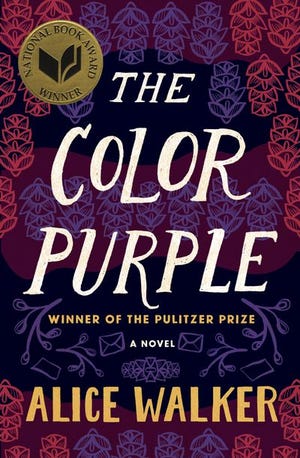
‘The Color Purple’ by Alice Walker
The world would be a poorer place without Walker’s “The Color Purple.” Taking inspiration from her literary foremother Zora Neale Hurston, Walker centers southern Black women, who are all too often misrepresented in American culture. I was a little girl when I first picked up “The Color Purple” but it would take until I was an adult to fully comprehend the courage it took for Celie to let go of all the oppressive teachings she internalized and find her own freedom. Oftentimes what people call “controversial” in literature is simply an author refusing to ignore the truth. Walker gave a gift to Black women and everyone else with “The Color Purple.” Celie’s relationship with Shug Avery may be a relationship that makes some people uncomfortable. But for Black LGBTQ+ individuals, it’s a necessary and affirming literary coupling. Don’t we all deserve to see our lives and truths reflected in the literature we read? — Quarshie
‘The Giver’ by Lois Lowry
A must-read dystopian novel for any teen, I first read this book in middle school, and then I re-read it in high school and college. The main character, a tween named Jonas, is given the important role as ‘Receiver of Memory,’ where he is supposed to retain the beautiful and dark moments others in his community can’t see. He can see color in a black-and-white world as well as the environment, animals, human emotions and past experiences. The book sheds light on the importance of freedom and living life as one chooses to, but the message goes deeper than that. Valuing our relationships with our friends, family, and colleagues in the real-world is a gift. Oftentimes, we lose sight of what makes our life beautiful, even though it is right in front of us. And those lessons are conveyed elegantly in this book, from start to finish. Life is spontaneous and crazy, and there shouldn’t be someone telling us how to live our life when we have the ability to carve our own destiny. Banning this book would be a loss for children, not a gain — Sudiksha Kochi
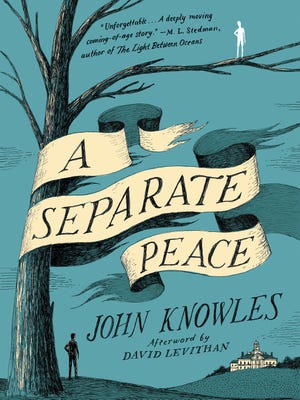
‘A Separate Peace’ by John Knowles
I first read Knowles’ 1959 novel “A Separate Peace” at 14 as a closeted gay teenager. I next read “A Separate Peace” at 29, an out gay adult. I provide this context because it absolutely shaped the way I read the story about wealthy teens at a New England boarding school at the start of WWII, and understood the relationship between Gene and Finny – one of platonic love bordering on romantic, one of pride bordering on envy and one of playing around bordering on violence. As clarified in David Levithan’s afterword included in my edition, Knowles did not intend on homoeroticism between the characters. But Levithan gets to the heart of how I felt: “Knowles did not write about two boys who know they are gay or have conscious gay feelings, but he certainly created a compelling resonance for boys who do.” Thank you, Knowles, either way. — David Oliver
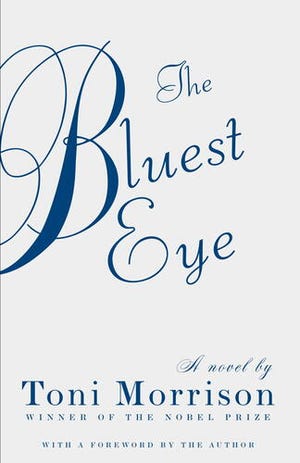
‘The Bluest Eye’ by Toni Morrison
Setting aside every major literary award bestowed upon her, Morrison’s oeuvre is too important to American literature to ever be cast aside or banned. I was a teenager the first time I read “The Bluest Eye,” too young to truly grasp the horror of what Morrison was writing about. Now, as a dark-skinned Black woman re-reading it, I understand the suffering that Pecola Breedlove was subjected to. Little Black girls deserve literature that doesn’t shy away from the pain that white supremacy and patriarchy inflicts upon them. If we can’t read and contemplate the horrors that are inflicted upon our children, how will we ever make the world a better place? Yes “The Bluest Eye” takes an unflinchingly look at sexual violence and incest. But in a nation still reeling from the #MeToo movement, we cannot afford to look away. Black women, like Native American women, are at a disproportionate risk for sexual violence. The literature written about African American women shouldn’t ignore these horrifying statistics either. — Quarshie
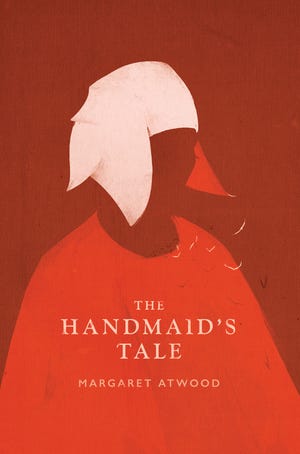
‘The Handmaid’s Tale’ by Margaret Atwood
Atwood said she didn’t include any events in the book that hadn’t already happened in history or any technology not already available. “No imaginary gizmos, no imaginary laws, no imaginary atrocities,” she wrote in the New York Times in 2017. The result is a book about a theocratic dictatorship that takes over the United States after climate change and declining birth rates threaten to cripple the nation’s economy. Fertile women are reproductive slaves, forced to bear children for the elite. In the 1980s, when it was published, the book read as a response to the political rise of Christian fundamentalists, the bombing of abortion clinics and the control of those behind the Iron Curtain. As we sit in 2021 with climate change threatening our coastlines and crops, a rising threat of nationalism and attempts to chip away at the hard-fought rights of women, minorities and the LGBTQ+ community, the plot seems evermore an apt prediction. What could be more important now than a book that explores the dangers of totalitarianism as we watch democracy challenged on the very steps of Congress? A book that explores the power of women as the #MeToo and #TimesUp movements push the next wave of feminism forward? A book with dire warnings about what can happen when resources get scarce, as drought and wildfires have become the new norm for a swath of our country? Because of its plausibility, “The Handmaid’s Tale” is timeless and relevant. It was a necessary book in the 1980s and its still a necessary book in 2021. — Katie Wedell
‘1984’ by George Orwell
One of the most thought-provoking and interesting dystopian books I have come across, I read “1984” back in high school when it was assigned reading for my English class. There is simply no other book that can quite frankly show readers what it would be like to live in a society where the freedom to think and make choices for oneself is not allowed. This book sheds light on why it is important for people to express themselves and make choices, and why freedom of expression is important in society. Another important theme that struck my attention was misinformation and disinformation being spread by the ruling party. . As an early-career reporter, I strive to make sure that the public knows the truth and the facts. This book is a must-read for any high-schooler because it teaches lessons that you wouldn’t get from any other book — Kochi
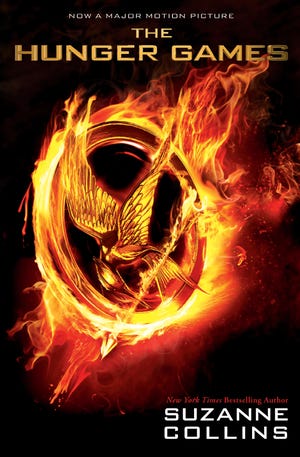
‘The Hunger Games’ (series) by Suzanne Collins
I fell down the “Hunger Games” rabbit hole during the pandemic. What started as something to pass time turned into a deep dive into Collins’ post-apocalyptic world of Panem, a society deeply divided by wealth disparity, where the elite are more concerned with pageantry than basic human rights. I couldn’t help but notice some striking parallels between the dystopia and our pandemic-riddled nation. The rich got richer. The poor got poorer. And although we don’t send a young boy and girl from each district to their televised demise, the constant loop of trauma of Black and brown bodies being killed by police felt similar in the summer of 2020. The tale may have been outrageously dystopian when Collins originally published her first installment in 2008, but it is not as outrageous in the lens of 2021. Some Twitter users even compared the 2021 Met Gala in New York to a lavish party in District 1 as many communities grapple with the lasting effects of COVID-19. That’s exactly why this book shouldn’t be banned. — Cydney Henderson
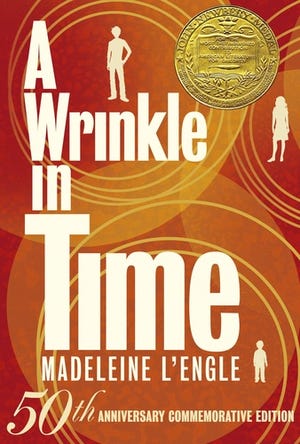
‘A Wrinkle in Time’ by Madeleine L’Engle
The first time I read “A Wrinkle in Time,” I was even younger than the sci-fi classic’s 13-year-old heroine, Margaret (Meg) Murray. At the time, I didn’t know how much I needed a heroine like her in my life. As I’ve re-read the book (and read it to my own kids) many years later, I’ve sent up a brief word of thanks that I was introduced to Meg. She is thrust into impossible peril with unfathomable stakes, and she overcomes it. Resentfully, even angrily, she saves her family, not despite her flaws but because of them. A wild, strange, sprawling tale, “A Wrinkle in Time” let me know, just as it has for generations of young readers, that there’s immense power in being yourself; that the galaxy is weird, wide and wonderful; that love is the answer no matter the question; and that you can be terrified and do brave things anyway — in fact, you must. — Jennifer Ernst Beaudry
‘Born a Crime’ by Trevor Noah
Noah’s 2016 memoir, “Born A Crime” is at its core a love letter to his mother, whose romantic relationship with a Swiss man was a punishable offense in South Africa’s apartheid state. She rears Trevor through apartheid and its chaotic collapse, and eventually through her own abusive relationship with his stepfather by a mix of tough love, gallows humor and religion. Yet “Born A Crime” forces the reader – particularly American-born consumers – to look critically into corners where we too easily looked away. Certainly, apartheid was touched on in our history or government classes. Too often, though, its abstract presentation – brutal colonization, minority rule, a worthy martyr named Nelson Mandela – never encouraged us to get too close, lest we recognize our own pathologies. “Born A Crime” is breezy and sweet and often hilarious, a dubious target for censure, it would seem. Yet it does not equivocate in recounting a brutal chapter of history. — Gabe Lacques
‘Harry Potter’ (series) by J.K. Rowling
It’s a shame that Rowling tarnished her own legacy in recent years by attacking transgender people — for fans, her hate speech felt like a betrayal of the very values her books espoused. “The Harry Potter” novels have been frequently challenged by religious groups for supposedly promoting witchcraft. But snatching these books out of the hands of children because of that supernatural bogeyman would be doing them an awful disservice. The series taught a generation of readers about empathy, friendship and courage in the face of political danger: Themes that Rowling would do well to apply to her own recent rhetoric. Harry Potter is a powerful example of fiction’s ability to make us more thoughtful and discerning people, and for that, it should not be banned. The books should continue to be shared and obsessed over like they’ve been by readers of all ages for the past two decades. — Jason Lalljee

